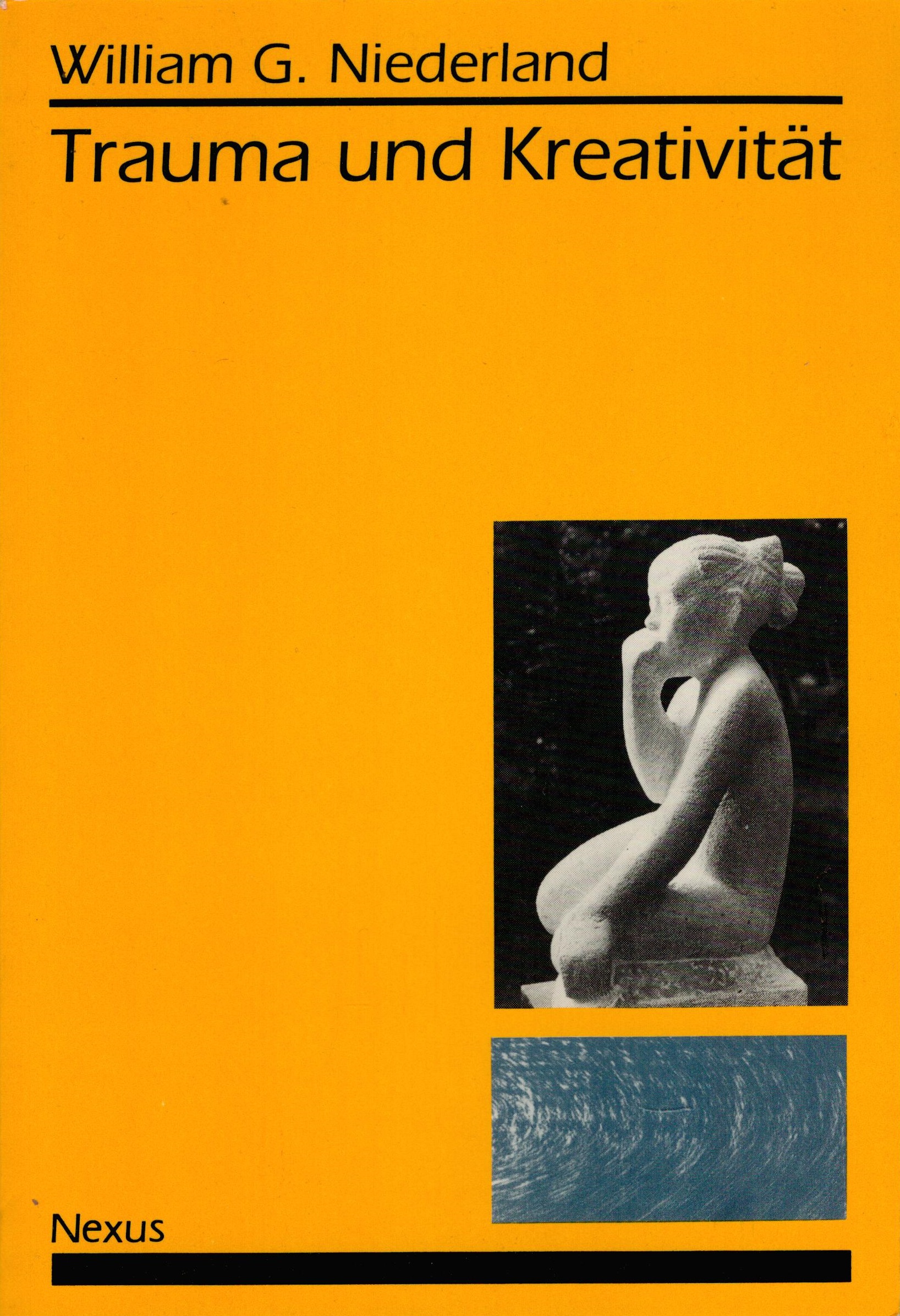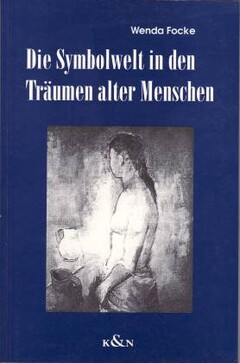Details
| Autor | Niederland, William G. |
|---|---|
| Herausgeber | Focke, Wenda (Hg.) |
| Verlag | Nexus |
| Auflage/ Erscheinungsjahr | 1989 |
| Format | 20,5 × 14 cm |
| Einbandart/ Medium/ Ausstattung | Paperback |
| Seiten/ Spieldauer | 232 Seiten |
| SFB Artikelnummer (SFB_ID) | SFB-000233_AC |
Zu diesem Buch
Der Band bietet eine von Wenda Focke besorgte Auswahl der wichtigsten Arbeiten des 1904 in Ostpreußen geborenen William Niederland, der 1934 als Jude auf der Flucht vor den Nazis seine Heimat verlassen mußte, in die USA emigierte und dort u. a. mit seinem Buch »Seelenmord. Das Überlebenden-Syndrom« (1980) bekannt wurde. Den Beiträgen ist eine informative Einleitung von H.-M. Lohmann beigegeben, die in Leben und Werk dieses bedeutenden Psychoanalytikers einführt.
Inhalt
- Einleitung
- Flußsymbolik
- Psychoanalytische Bemerkungen zur Geschichte und Bedeutung Kaliforniens
- Freuds „Dejä-vu“ auf der Akropolis
- Die Philippsonsche Bibel und Freuds Faszination für die Archäologie
- Das Schöpferische im Lebenswerk Heinrich Schliemanns
- Die erste Anwendung der Psychoanalyse auf ein literarisches Werk
- Die Geburt von H. G. Wells’ „Zeitmaschine“
- Einige ontogenetische Determinanten im Prozeß der Symbolbildung
- Klinische Aspekte der Kreativität
- Psychoanalytische Überlegungen zur künstlerischen Kreativität
- Handikap, Verlust und Kreativität
- Goyas Krankheit: eine Blei-Enzephalopathie?
- Die Narbe - ein Fall von angeborener Gesichtsentstellung
- Drei Bemerkungen zum Fall Schreber
- Weitere Ergebnisse meiner Schreber-Forschung
- Bibliographie
- Quellennachweis
- Der Autor
"William G. Niederland was born on August 29, 1904 in Schippenbeil, East Prussia. His father was an orthodox cantor who moved with his family to Würzburg in order to become a rabbi there. In 1929, Niederland received his medical degree from the University of Würzburg and subsequently worked as a physician in Berlin, Düsseldorf and Geilingen. Niederland immigrated to Italy in 1934. There he took the medical exam for a second time and established a psychiatric practice in Milan. However, he was forced to flee to England five years later to escape the increasingly prevalent growth of fascism. The following year, Niederland entered the United States as an immigrant, although he did not become a citizen until 1954.
After having passed his third medical exam in 1941, Niederland founded a private practice in New York with another immigrant, Paul Kahn. In addition, he traveled throughout the United States giving lectures on the subject of fascism in Germany and other European countries. From 1945 to 1947, Niederland taught at the University of Tampa in Florida. Upon leaving this post, he traveled to Europe for the first time since World War II and visited Zürich, Düsseldorf, and his childhood home, Würzburg.
Apart from working as a psychiatrist in both private practice and several hospitals in New York and New Jersey, Niederland was also a renowned scholar, professor, and published author. On his return to New York City, Niederland commenced studying at the New York Psychoanalytic Institute, where he underwent formal psychoanalytic training between 1948 and 1953. He published his first book, Man Made Plague: A Primer on Neurosis in 1948. At the end of his training, Niederland taught at the Downstate Medical Center in Brooklyn from 1952 until 1977 when he was named Professor Emeritus. Furthermore, he maintained a private practice in New York for twenty years. In terms of professional activities, Niederland was a coeditor of Psychoanalytic Quarterly from 1958 to 1980. In 1971, he became president of the Psychoanalytic Association of New York, a position he held until 1973.
One of Niederland's major research interests for decades was the case of Daniel Paul Schreber, whose diaries had been analyzed by Freud in 1911. Niederland published numerous articles on the case, focusing on Schreber's childhood and his relationship with his father, these aspects having been neglected by previous researchers (in Niederland's opinion). His first work on Schreber, "Three Notes on the Schreber Case," was published in 1951; the book, The Schreber Case: Psychoanalytic Profile of a Paranoid Personality, came out in 1974.
In 1961, Niederland and his family traveled to Greece where he conducted extensive research on Heinrich Schliemann, which resulted in several publications, such as »Eros and Thanatos in the Life of Heinrich Schliemann: Psychoanalytic Profile of a Creative Mind« (1967). Creativity and the creative process became one of Niederland's dominant areas of research. One of his theses concerning this topic was that having confronted tragic or disturbing events during their childhood, many creative people achieved a higher emotional responsiveness to internal as well as external stimuli.
Karl Menninger, the well-known American psychiatrist, characterized Niederland as having a »gift for uncovering rare and exciting mysteries, examining them with psychoanalytic wisdom and presenting them to us as the most delightful reading material.« (Wenda Focke. William G. Niederland: Psychiater der Verfolgten: Seine Zeit, Sein Leben, Sein Werk. Würzburg: Könighausen and Neumann, 1992. p. 267). Wenda Focke, Niederland's former assistant, posited that the variety and vividness of his research activities allowed him to maintain his professional distance and cope with what became his main achievement in the field of psychiatry: the study of the psychic suffering of Holocaust survivors.
From 1953 onward, Niederland was a consultant to German courts ruling on indemnification claims by Holocaust survivors. Appointed by the German Consulate General, Niederland examined survivors claiming indemnification from German federal and state governments. The main question a psychiatric consultant had to answer was: to what extent a person (e.g. a concentration camp survivor, a former slave laborer, or someone who had lost his or her entire family in the Holocaust) was damaged in his or her capability to work for a living. Only if the court regarded the total extent of physical and psychic damage as being twenty-five percent or higher, claimants would be assigned indemnification. Moreover, the prevalent theory among German psychiatric consultants at the time was that the survivors' psychiatric diseases and mental suffering were results of the patients' dispositions, rather than the results of Nazi persecution.
Together with a handful of other psychiatrists, Niederland fought against this interpretation. He vehemently criticized clinical psychiatry for not regarding human beings as inseparable entities of body and soul, but merely as a conglomeration of organs and organic systems. Niederland, who was constantly confronted with Holocaust survivors, recognized that his patients' suffering was severe, persistent and incurable. He submitted very detailed and empathetic psychiatric reports that not only illustrated the impact of Nazi persecution on peoples' mental constitution, but were a testament to the life-enduring suffering of numerous Holocaust survivors. Niederland researched extensively on the psychic sequelae of the Holocaust in both child and adult survivors of the camps. In 1961, he published "The Problems of the Survivor-Part I." Two years later, the "Wayne State University Workshop on the Late Sequelae of Massive Psychic Trauma" took place, raising scholarly attention to the psychic impacts of Nazi persecution and becoming an important venue for dialogue and discussion for the next several years.
Eventually, Niederland established an international research network with colleagues Robert J. Lifton, Ulrich Venzlaff and Henry Krystal. Niederland coined the term, »The Survivor Syndrome«, in his 1964 publication of the same name. This now familiar medical phrase represents the traumatic aftermath of the Holocaust on millions of people within and outside the United States, based on the evaluation of about 800 cases he and others had examined. Numerous articles and lectures in the United States and Europe followed over the next decade. In 1968, the book Massive Psychic Trauma (edited by Henry Krystal) was published and in 1971 Krystal and Niederland together published, Psychic Traumatization: Aftereffects in Individuals and Communities. One of Niederland's most important works was Folgen der Verfolgung: Das Überlebenden-Syndrom, Seelenmord. Some of the psychiatric reports contained within this volume were being published for the first time. The term »Seelenmord« (Soul Murder) was meant to characterize the survivors' lifelong suffering and alienation from the "normal world." The controversies with other German psychiatric consultants, who in many cases disconnected the survivors' mental disease from their experiences and tried to reduce the chargeable impacts merely on physical damage, helped to sharpen Niederland's scientific concept. By the time the number of claims had decreased in the 1970s and 1980s, he had not only helped many survivors personally, but had contributed largely to the broader perspective concerning the Holocaust's impact on the victims and their descendents on both sides of the Atlantic.
Until he died in 1993, Niederland worked on all of his various research projects simultaneously. His last work on Schreber was published in 1989 in addition to a collection of essays entitled »Trauma und Kreativität«. These late dates illustrate the commitment and passion that Niederland exhibited for his psychiatric topics, a commitment that spanned both time and geographic space." ((Quelle: Leo-Beck-Institute, NYC; Autorin: Frauke STEFFENS, M.A., Hannover)
Lieferbarkeitshinweis
Dieser Titel ist bei der SFB in wenigen verlagsfrischen Archivexemplaren verfügbar; beim Verlag vergriffen.


Kommentare
Schreiben Sie den ersten Kommentar!
Neuer Kommentar
Bitte beachten Sie vor Nutzung unserer Kommentarfunktion auch die Datenschutzerklärung.